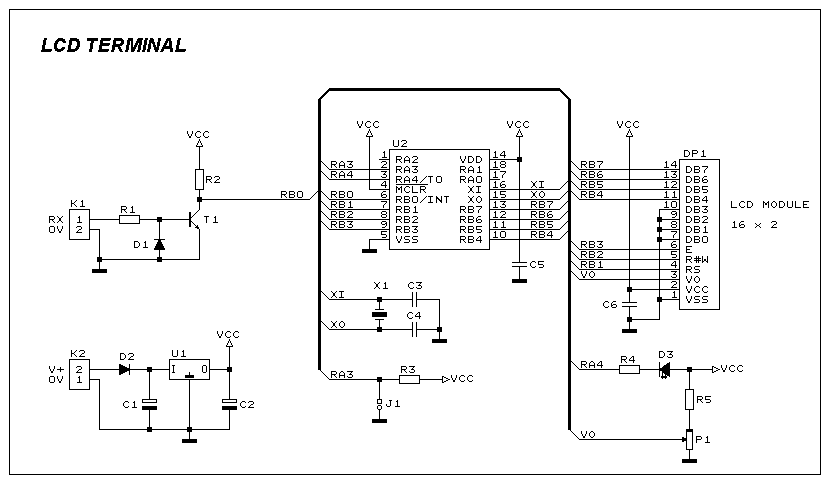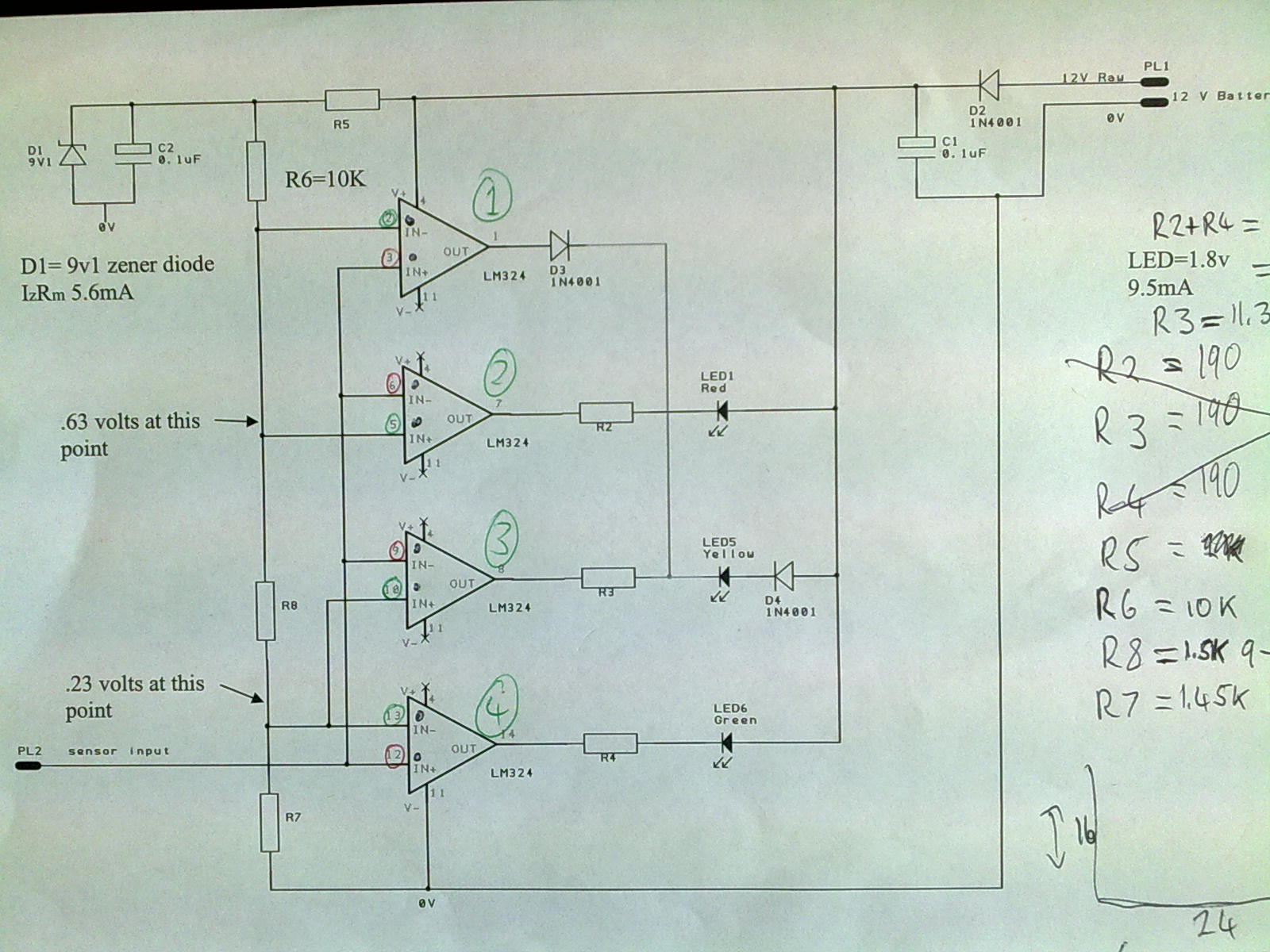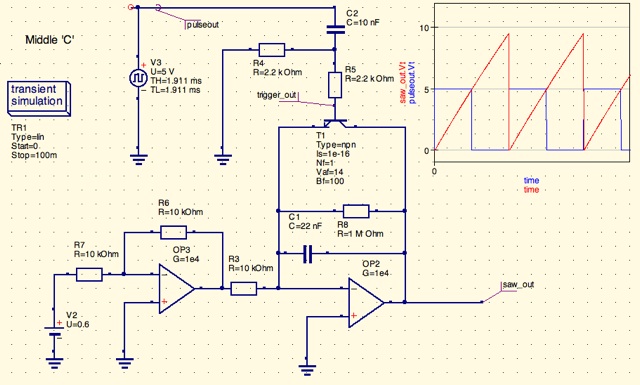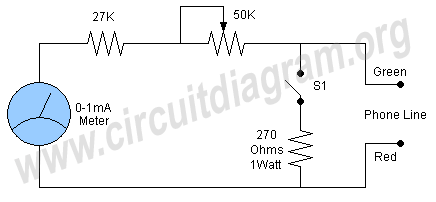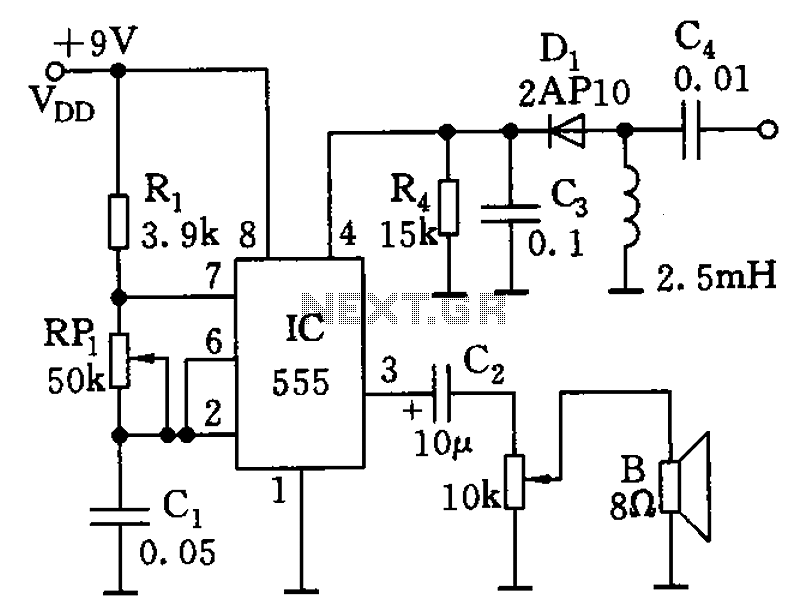
2 Terminal Test Oscillator
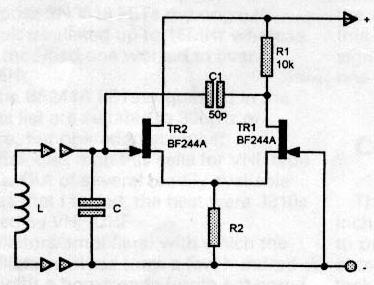
Individuals interested in home construction may occasionally need to measure the inductance of small coils. This task can be challenging, as commercially available equipment with sufficient accuracy is often prohibitively expensive for occasional use in an amateur workshop. Affordable LCR bridges typically only function at audio frequencies and are known for their inaccuracy at low inductance ranges. Consequently, coil construction can become a trial-and-error process, leading many home constructors to resort to costly pre-made coils that could have been fabricated at home from inexpensive materials if proper testing facilities were accessible. The measurement method described herein offers an economical solution to this issue, having been utilized for over 40 years. It employs the coil under test in parallel with a known 1% capacitor to create a tuned circuit for a two-terminal test oscillator. After accounting for circuit stray capacitance, the total circuit capacitance and oscillating frequency can be substituted into the standard resonant circuit formula to accurately calculate the coil's inductance for general applications. This method has the advantages of allowing coils to be tested in practical circuits at their operating frequency and facilitating easy measurements on toroids and sealed coils, such as IF transformers, just as on open coils. Additionally, the circuit can serve multiple functions, including as a signal generator, dip meter, or for measuring small capacitors. Figure 1a illustrates the basic circuit of an FET source coupled two-terminal oscillator, a semiconductor version of a valve circuit popular in the 1950s. Derived from an early radar pulse generator known as a cathode-coupled multivibrator, this circuit forms a highly active tunable oscillator that reliably operates from low audio frequencies to VHF and UHF ranges. The primary advantage of this circuit, making it particularly useful as a test oscillator, is that it does not require any capacitive tap, inductive tap, or feedback winding to function. Simply connect a parallel tuned circuit across the two test terminals, apply power, and it operates. The only requirement is that the tuned circuit has a realistic LC ratio (a minimum of 1-2 pF per meter of operating wavelength is a good guideline for the capacitor value) and is constructed from high-quality components. The circuit's operation is straightforward. TR2 in Figure 1a is an FET source follower directly coupled to the common gate FET amplifier TR1 through their shared load resistor R2. Capacitor C1 provides a positive feedback path from the drain of TR1 to the gate of TR2, maintaining oscillation at the resonant frequency of LC as long as the loop gain of TR1 and TR2 is sufficient to overcome circuit losses. Figure 1b presents the same circuit rearranged to allow R1 to be increased in value from 10k to 2M2. This adjustment reduces damping of the tuned circuit, thereby extending the frequency range and improving consistent operation with low-Q coils. The enhancement from this simple modification is significant; using inexpensive general-purpose 2N3819 FETs, the original circuit oscillated up to 15MHz, while the modified version operated beyond 25MHz. The BF244A FETs listed in the parts list are suitable for frequencies up to 30MHz, but operation at higher frequencies necessitates the use of VHF-type FETs. Among several readily available types tested, the J310s (designated for VHF/UHF oscillators/amplifiers) proved to be the most effective, enabling the oscillator to function from a few hundred Hz (with a homemade ferrite pot-cored coil plus 1pF) to 60MHz with a small hairpin loop tuned by 25pF (the stray capacitance of the test oscillator). Figure 2 depicts the practical version of the tester, where TR1 and TR2 are connected as in the oscillator circuit of Figure 1b.
The described circuit serves as a versatile tool for measuring inductance, operating at various frequencies with high reliability. The primary components include two FETs configured to create an oscillator that can be tuned to the desired frequency using a parallel LC circuit. The selection of FETs is crucial for achieving the desired frequency range; thus, using high-frequency components like the J310 is recommended for applications requiring measurements beyond 30MHz. The circuit's design allows for minimal complexity while ensuring accurate measurements, making it an ideal choice for amateur constructors and hobbyists. The ability to test coils in situ, particularly in practical applications, enhances its utility, allowing users to evaluate performance without requiring disassembly or complex setups. The circuit can also be adapted for other measurement tasks, demonstrating its multifunctional nature. Overall, this system provides an effective and economical solution for inductance measurement, catering to the needs of hobbyists and professionals alike.Anyone who is interested in home construction will at some time or other have the need to measure the inductance of small coils. This can be a difficult problem, as commercially made equipment of sufficient accuracy is often far too expensive for occasional use in an amateur workshop.
The simple LCR bridges that are affordable generally only Work at audio frequency and are notoriously inaccurate on their Low inductance ranges. The result of this is that coil construction is often so hit-and-miss that for many applications the home constructor has to use expensive ready made coils, which could have been wound at home from materials costing a few pence if test facilities had been available. The method of measurement described here is a inexpensive solution to the problem that I have been using for over 40 years.
It uses the coil under test in parallel with a known 1% capacitor to form the tuned circuit for a 2-terminal test oscillator. After making allowance for circuit strays, the total circuit capacity and the oscillating frequency can be entered in the standard resonant circuit formula to calculate the inductance.
of the coil accurately enough for all normal purposes. Using this method has the advantages that a) coils can be tested in a practical circuit at the operating frequency and b) measurements are just as easy to make on toroids and sealed coils such as IF transformers as they are on open coils. An additional bonus is that the circuit can be used for a variety of other purposes such as a signal generator, a dip meter or to measure small capacitors.
Fig. la shows the basic circuit of an FET source coupled 2terminal oscillator, which is the semiconductor version of a valve circuit that was popular in the 1950s. This circuit, which was derived from an early radar pulse generator called a cathode-coupled multivibrator, forms a very active tuneable oscillator that can be made to work reliably from Low audio frequencies up to the VHF and UHF ranges.
The great advantage of this circuit, and the thing that makes it so useful as a test oscillator, is that it doesn`t need any sort of capacitive tap, inductive tap, or feedback winding to make it work. Simply connect a parallel tuned circuit across the two test terminals, apply power, and away it goes.
The only criteria are that the tuned circuit has a realistic LC ratio (a minimum of 1-2 pF per metre of operating wavelength is a good rule of thumb for the capacitor value), and is made from good quality components. Operation of the circuit itself is quite straightforward. TR2 in Fig. la is an FET source follower that is directly coupled to the common gate FET amplifier TR1 by way of their shared load resistor R2.
C1 provides a positive feedback path from the drain of TR1 to the gate of TR2 and this maintains oscillation at the resonant frequency of LC so long as the loop gain of TR1, TR2 is enough to overcome circuit losses. Fig lb is the same circuit rearranged to allow R1 to be increased in value from 10k to 2M2. This reduces damping of the tuned circuit which in turn extends the frequency range and gives more consistent operation with Iow-Q coils.
The improvement given by this simple change is quite significant, as with cheap general purpose 2N3819 FETs my original circuit oscillated up to 15MHz whereas the modified one worked to over 25MHz. The BF244A FETs suggested in the parts list are suitable to 30MHz or more, but operation at higher frequencies than this calls for VHF type FETs.
Out of several readily available types that I tested, the best were J310s (listed as VHF/UHF oscillators/amplifiers) with which the oscillator worked from a few hundred Hz (with a homemade ferrite pot-cored coil plus lpF) up to 60MHz with a small hairpin loop tuned by 25pF (the stray capacity of my test oscillator). Fig. 2 gives the practical version of the tester, where TR1 and TR2 are connected as in the oscillator circuit of Fig lb
🔗 External reference
The described circuit serves as a versatile tool for measuring inductance, operating at various frequencies with high reliability. The primary components include two FETs configured to create an oscillator that can be tuned to the desired frequency using a parallel LC circuit. The selection of FETs is crucial for achieving the desired frequency range; thus, using high-frequency components like the J310 is recommended for applications requiring measurements beyond 30MHz. The circuit's design allows for minimal complexity while ensuring accurate measurements, making it an ideal choice for amateur constructors and hobbyists. The ability to test coils in situ, particularly in practical applications, enhances its utility, allowing users to evaluate performance without requiring disassembly or complex setups. The circuit can also be adapted for other measurement tasks, demonstrating its multifunctional nature. Overall, this system provides an effective and economical solution for inductance measurement, catering to the needs of hobbyists and professionals alike.Anyone who is interested in home construction will at some time or other have the need to measure the inductance of small coils. This can be a difficult problem, as commercially made equipment of sufficient accuracy is often far too expensive for occasional use in an amateur workshop.
The simple LCR bridges that are affordable generally only Work at audio frequency and are notoriously inaccurate on their Low inductance ranges. The result of this is that coil construction is often so hit-and-miss that for many applications the home constructor has to use expensive ready made coils, which could have been wound at home from materials costing a few pence if test facilities had been available. The method of measurement described here is a inexpensive solution to the problem that I have been using for over 40 years.
It uses the coil under test in parallel with a known 1% capacitor to form the tuned circuit for a 2-terminal test oscillator. After making allowance for circuit strays, the total circuit capacity and the oscillating frequency can be entered in the standard resonant circuit formula to calculate the inductance.
of the coil accurately enough for all normal purposes. Using this method has the advantages that a) coils can be tested in a practical circuit at the operating frequency and b) measurements are just as easy to make on toroids and sealed coils such as IF transformers as they are on open coils. An additional bonus is that the circuit can be used for a variety of other purposes such as a signal generator, a dip meter or to measure small capacitors.
Fig. la shows the basic circuit of an FET source coupled 2terminal oscillator, which is the semiconductor version of a valve circuit that was popular in the 1950s. This circuit, which was derived from an early radar pulse generator called a cathode-coupled multivibrator, forms a very active tuneable oscillator that can be made to work reliably from Low audio frequencies up to the VHF and UHF ranges.
The great advantage of this circuit, and the thing that makes it so useful as a test oscillator, is that it doesn`t need any sort of capacitive tap, inductive tap, or feedback winding to make it work. Simply connect a parallel tuned circuit across the two test terminals, apply power, and away it goes.
The only criteria are that the tuned circuit has a realistic LC ratio (a minimum of 1-2 pF per metre of operating wavelength is a good rule of thumb for the capacitor value), and is made from good quality components. Operation of the circuit itself is quite straightforward. TR2 in Fig. la is an FET source follower that is directly coupled to the common gate FET amplifier TR1 by way of their shared load resistor R2.
C1 provides a positive feedback path from the drain of TR1 to the gate of TR2 and this maintains oscillation at the resonant frequency of LC so long as the loop gain of TR1, TR2 is enough to overcome circuit losses. Fig lb is the same circuit rearranged to allow R1 to be increased in value from 10k to 2M2. This reduces damping of the tuned circuit which in turn extends the frequency range and gives more consistent operation with Iow-Q coils.
The improvement given by this simple change is quite significant, as with cheap general purpose 2N3819 FETs my original circuit oscillated up to 15MHz whereas the modified one worked to over 25MHz. The BF244A FETs suggested in the parts list are suitable to 30MHz or more, but operation at higher frequencies than this calls for VHF type FETs.
Out of several readily available types that I tested, the best were J310s (listed as VHF/UHF oscillators/amplifiers) with which the oscillator worked from a few hundred Hz (with a homemade ferrite pot-cored coil plus lpF) up to 60MHz with a small hairpin loop tuned by 25pF (the stray capacity of my test oscillator). Fig. 2 gives the practical version of the tester, where TR1 and TR2 are connected as in the oscillator circuit of Fig lb
🔗 External reference
